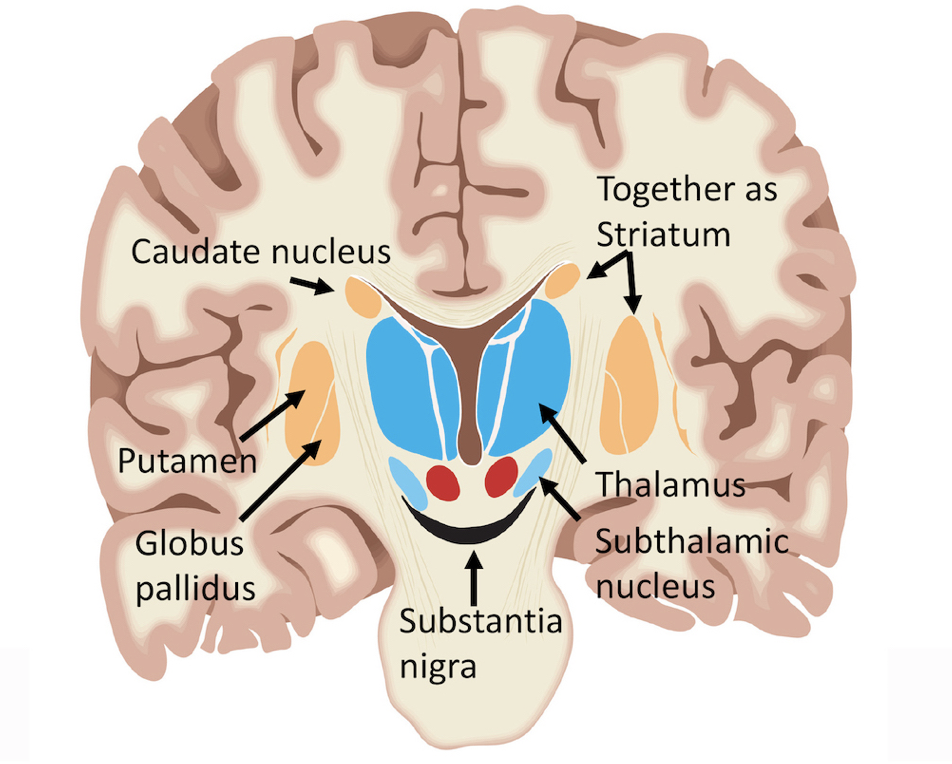Substantia nigra
The substantia nigra is considered part of both the basal ganglia and the midbrain due to its anatomical location and its functional role within these brain systems.
Here’s a breakdown of why it belongs to both:

1. Anatomical Location
- Midbrain: The substantia nigra is located in the mesencephalon, which is the midbrain region of the brainstem. It lies just below the cerebral cortex and above the pons and medulla oblongata.
- Basal Ganglia: The substantia nigra is one of the key structures that make up the basal ganglia, a group of nuclei that work together to regulate voluntary motor control, procedural learning, routine behaviors, and emotion.
2. Structural Organization
- The basal ganglia are made up of several interconnected structures, including:
- Striatum (composed of the caudate nucleus and putamen)
- Globus Pallidus
- Subthalamic Nucleus
- Substantia Nigra (divided into the pars compacta and pars reticulata)
The substantia nigra, particularly the pars compacta, is critical for supplying dopamine to the striatum, which is essential for the proper functioning of the basal ganglia circuitry.
3. Functional Role
- Motor Control: The substantia nigra is crucial for the modulation of motor activity through its dopaminergic neurons. It communicates with other components of the basal ganglia to facilitate smooth and coordinated movements.
- Reward Pathways: Its involvement in the reward system also links it functionally to broader behavioral regulation, which is important for learning and motivation.
4. Connections and Interactions
- The substantia nigra has extensive connections with other basal ganglia structures (like the striatum and globus pallidus) and other brain regions (such as the thalamus and cortex). These connections are fundamental to the integrated function of the basal ganglia in motor planning and execution.
Summary
In summary, the substantia nigra is considered part of the midbrain due to its anatomical location in the mesencephalon and part of the basal ganglia because of its structural and functional integration within the network that regulates motor control and learning. This dual classification underscores its importance in both basic brain architecture and complex functional systems involved in behavior and movement.
